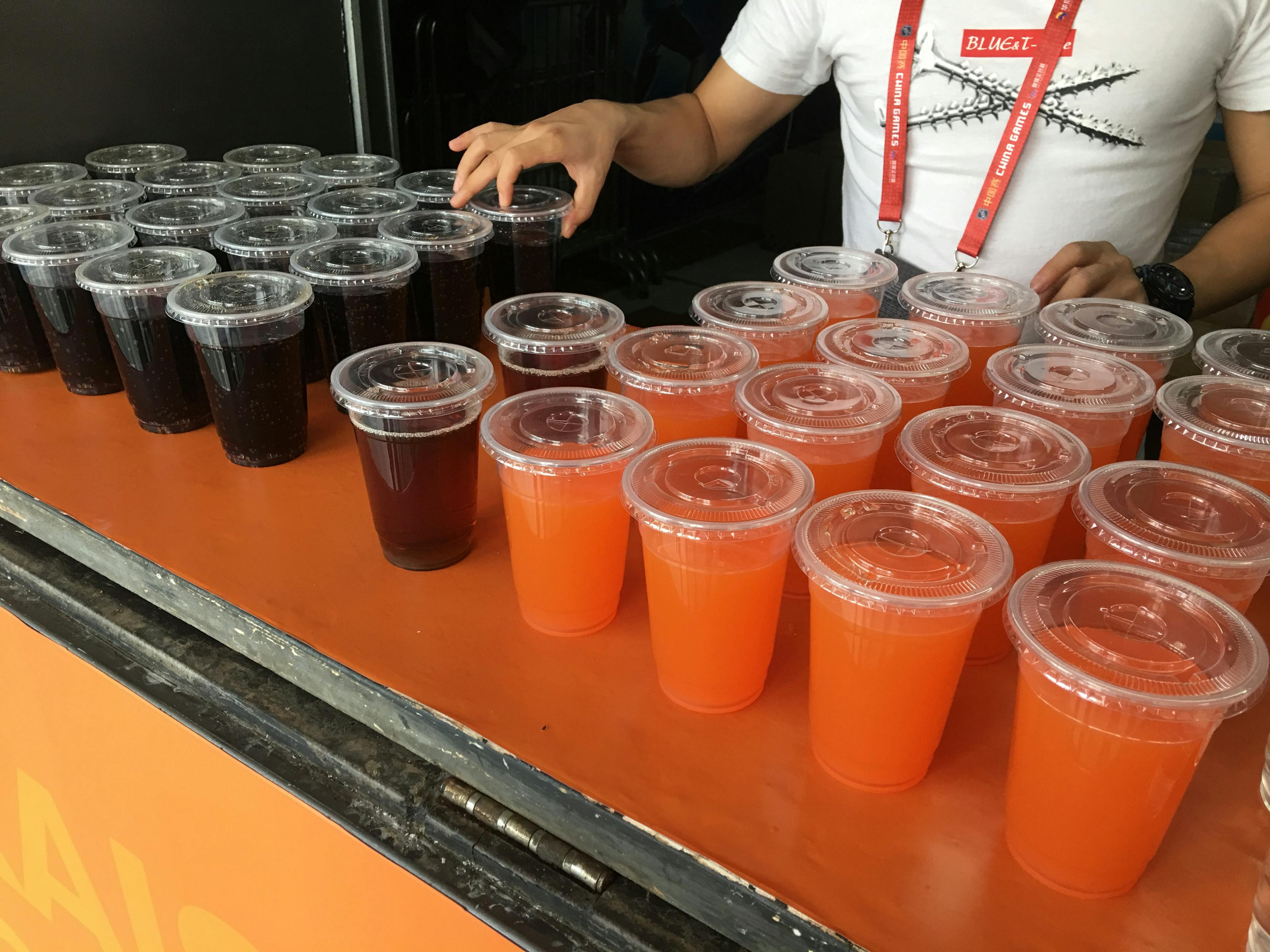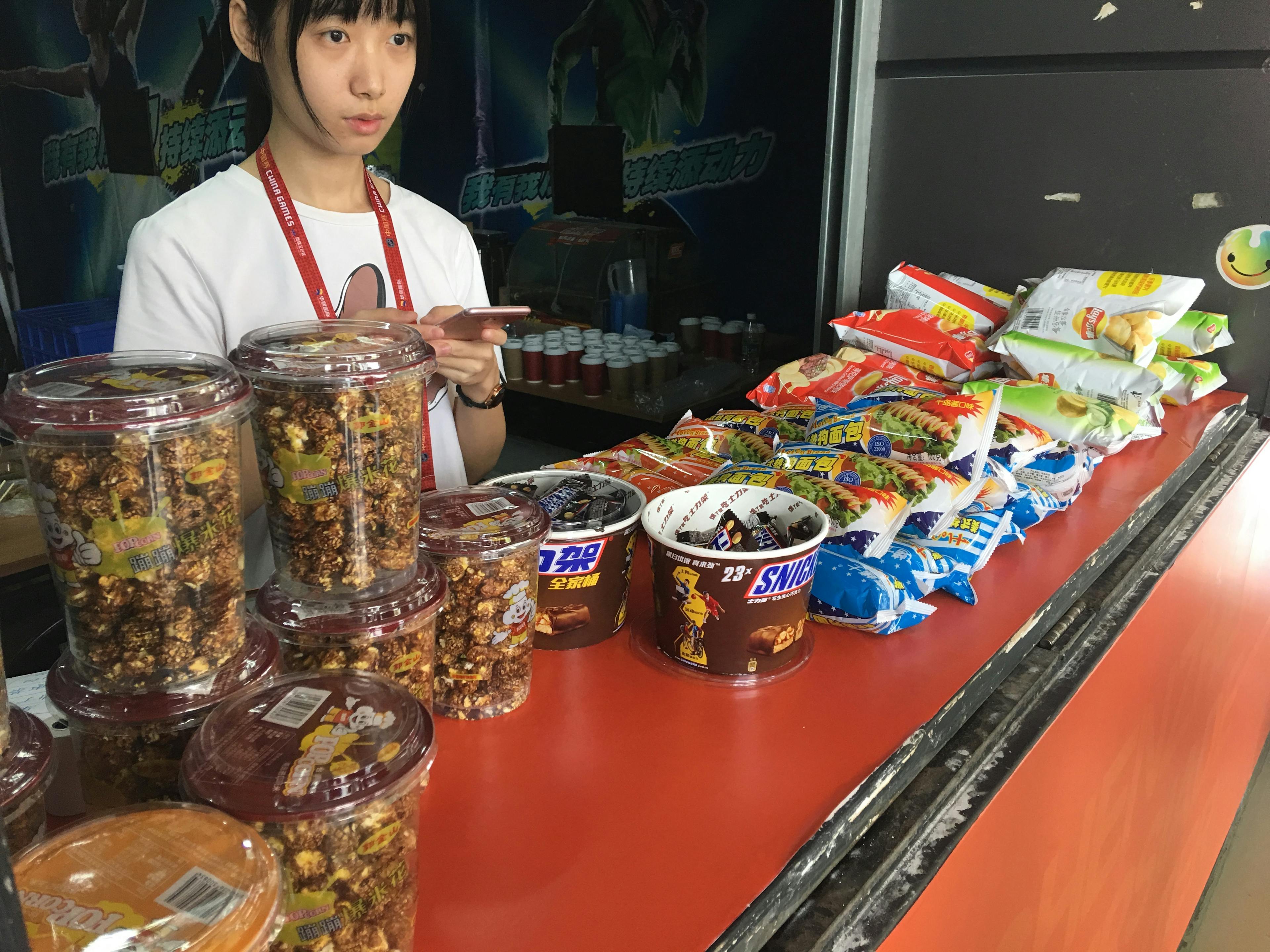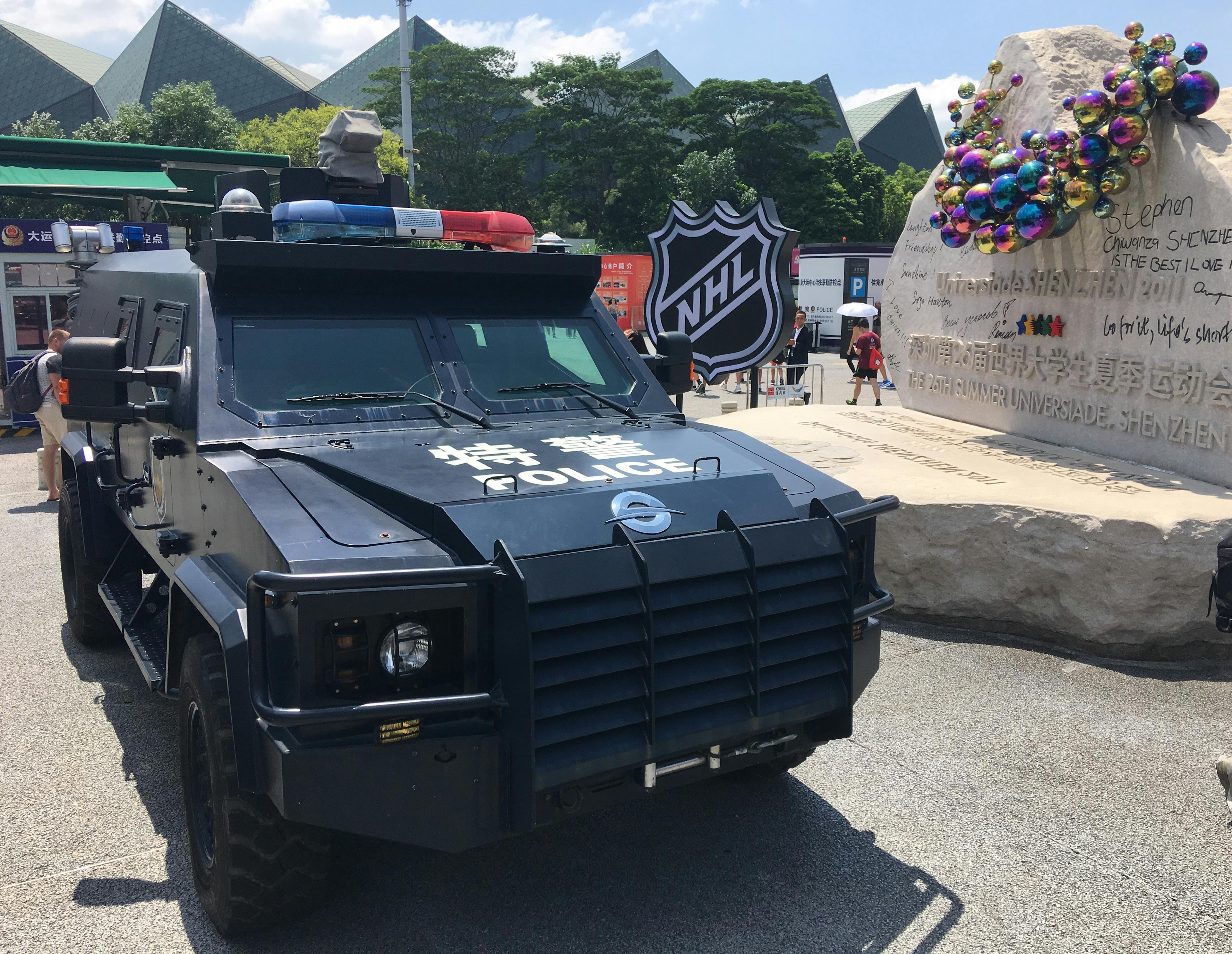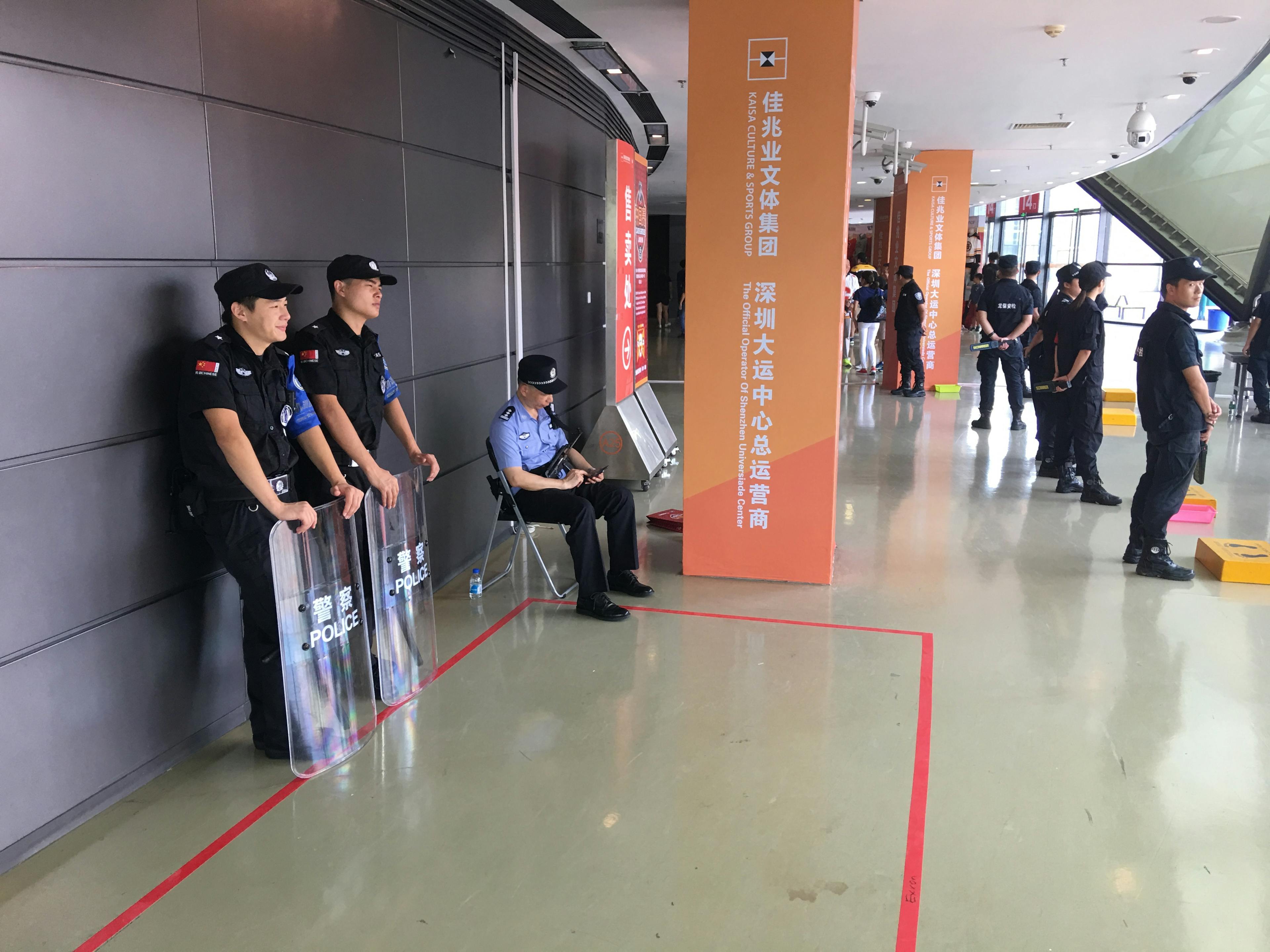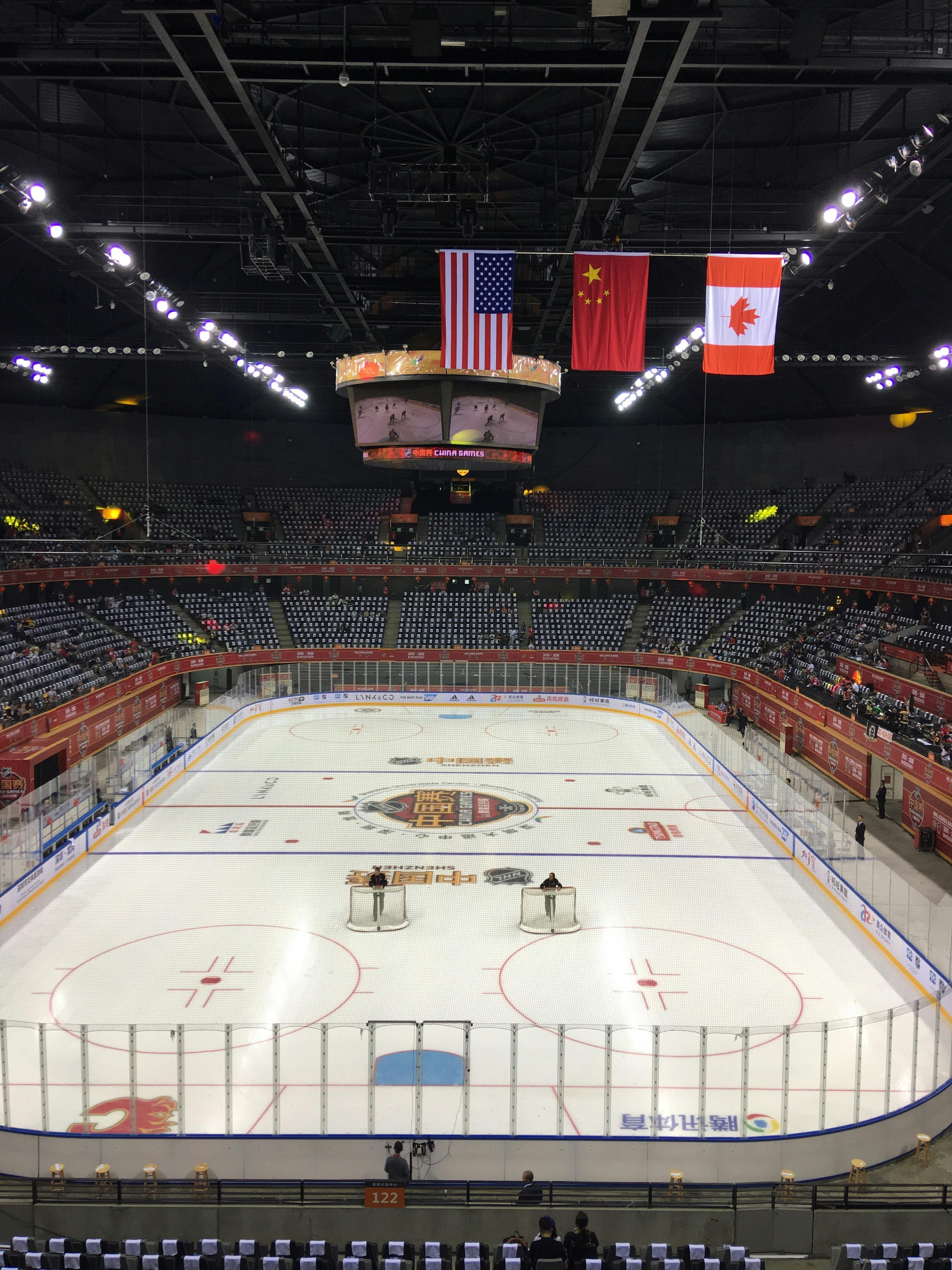A Fan’s Perspective: The NHL experience in Shenzhen
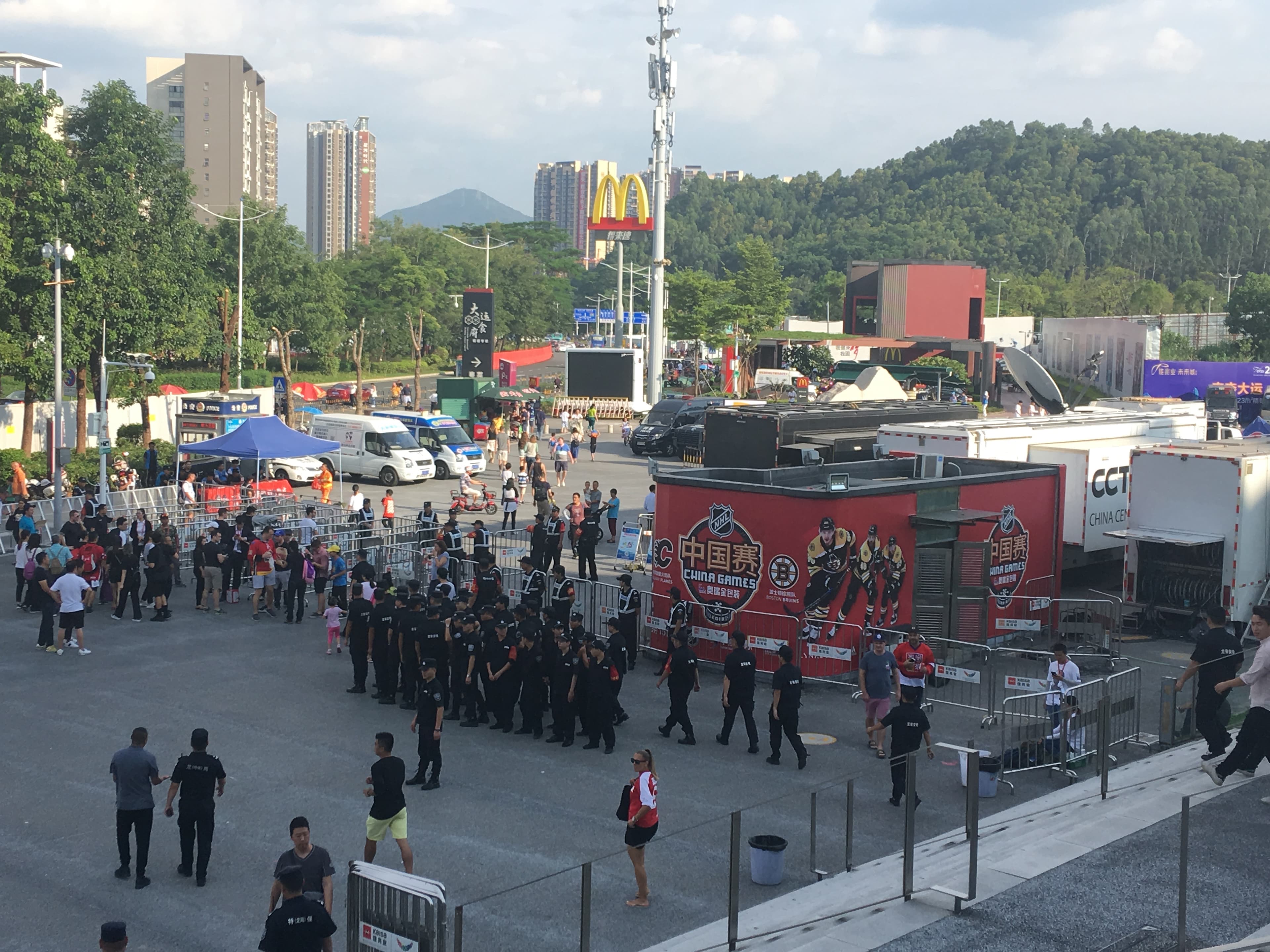
By Paul Hart
5 years agoThe 2018-19 season marks the 30th season since the Calgary Flames last drank from Lord Stanley’s Cup. After their victory over the Montreal Canadians, tens of thousands of Calgary’s finest braved blustery late May weather to celebrate the franchise’s first championship. Just a week later, thousands of Chinese protestors gathered in Tiananmen Square with a very different aim and a very different result. Thirty years later, as China seeks to move on from the narrative of the Tiananmen Square Massacre, the Calgary Flames seek to recreate the magic of 30 years ago. They began that journey Saturday in China.
For the second year in a row, the People’s Republic of China welcomed NHL franchises for a pair of exhibition games. The league’s foray into China appears potentially advantageous for all parties. The league gets to expand its reach to a market of 1.3 billion people with an economy projected to be the world’s biggest within 15 years. Any wealth from the Chinese market can line the pockets of both the league’s owners and its players. While economics likely drive the league’s motivations, for the PRC this form of cultural exchange (after all, what is Canadian culture but hockey?) both softens China’s image in the west and helps to prepare the country for the 2022 Olympics in Beijing.
Last year’s games between the Los Angeles Kings and Vancouver Canucks drew lukewarm reviews. Poor attendance in the first game in Shanghai led Phil Esposito to memorably declare that “the NHL blew it.” As an advisor to the Kunlun Red Star, the only China-based team in the KHL, Esposito certainly has a vested interest in seeing hockey thrive in China. (For Flames fans with a good memory, this is the same team that former Flames bench boss Mike Keenan was fired from in December 2017.)
So did the NHL learn its lessons from its first foray into China? Along with hundreds of other Canadians living in Hong Kong (including my five-year-old son), I headed north to Shenzhen to find out.
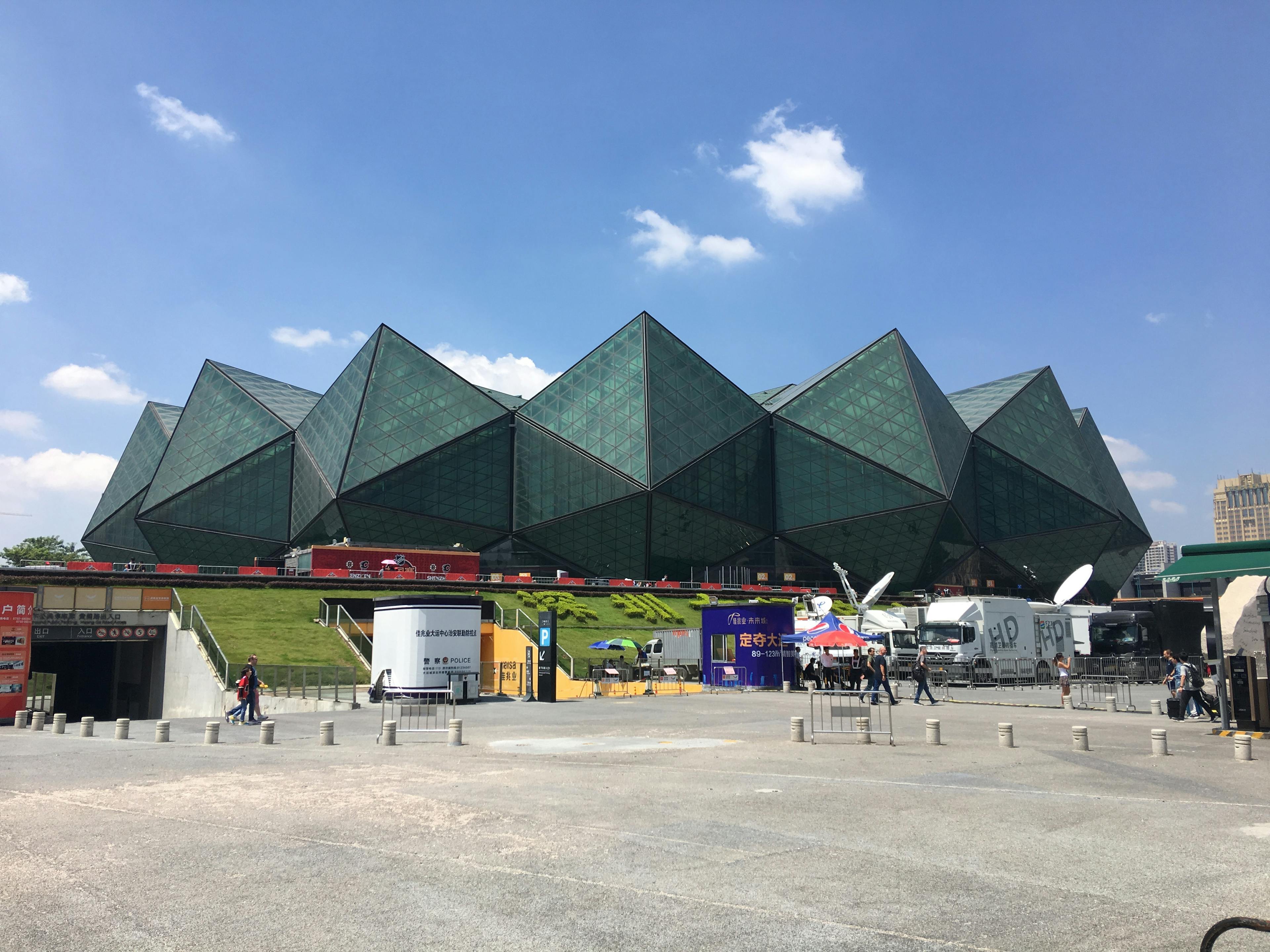
Shenzhen Universiade Sports Centre
After the debacle in Shanghai maybe it should be little wonder that Shenzhen was chosen as a venue in 2018. Shenzhen, a small town of just 30,000 inhabitants in the 1970s, has grown to a population of over 20,000,000 in its metropolian area. Its close proximity to the trading port of Hong Kong was key to its development, and was likely another reason for Shenzhen’s choice as a venue. Thomas Wu’s influence also shouldn’t be underestimated. The Hong Kong-based Wu serves as one of the IIHF’s three Vice Presidents. For NHL fans in Hong Kong, the game proved an easy day trip.
After criticism was leveled at the NHL and its Chinese partner, Bloomage International Sports Development Company (with whom the league has agreed to put on two more exhibition games in the next six years), ticket prices for this year’s event in Shenzhen were approximately 30% cheaper than last year, with tickets ranging in price from 15 to 280 Canadian dollars.
Despite midday temperatures of 35 degrees, hundreds of fans arrived hours early for the game to take part in NHL fanfest activities. Most early arrivers were North American and already fans of the game. Hockey jerseys from across the league could be seen, with Flames jerseys outnumbering Bruins gear by at least a 2:1 ratio.
While Lanny McDonald’s easygoing attitude and willingness to take photos and give autographs was undoubtedly a highlight for many, the biggest highlight for most was the presence of the Stanley Cup. Up to 90 minutes before puck drop fans could get their photo taken with the most iconic trophy in North American sports.
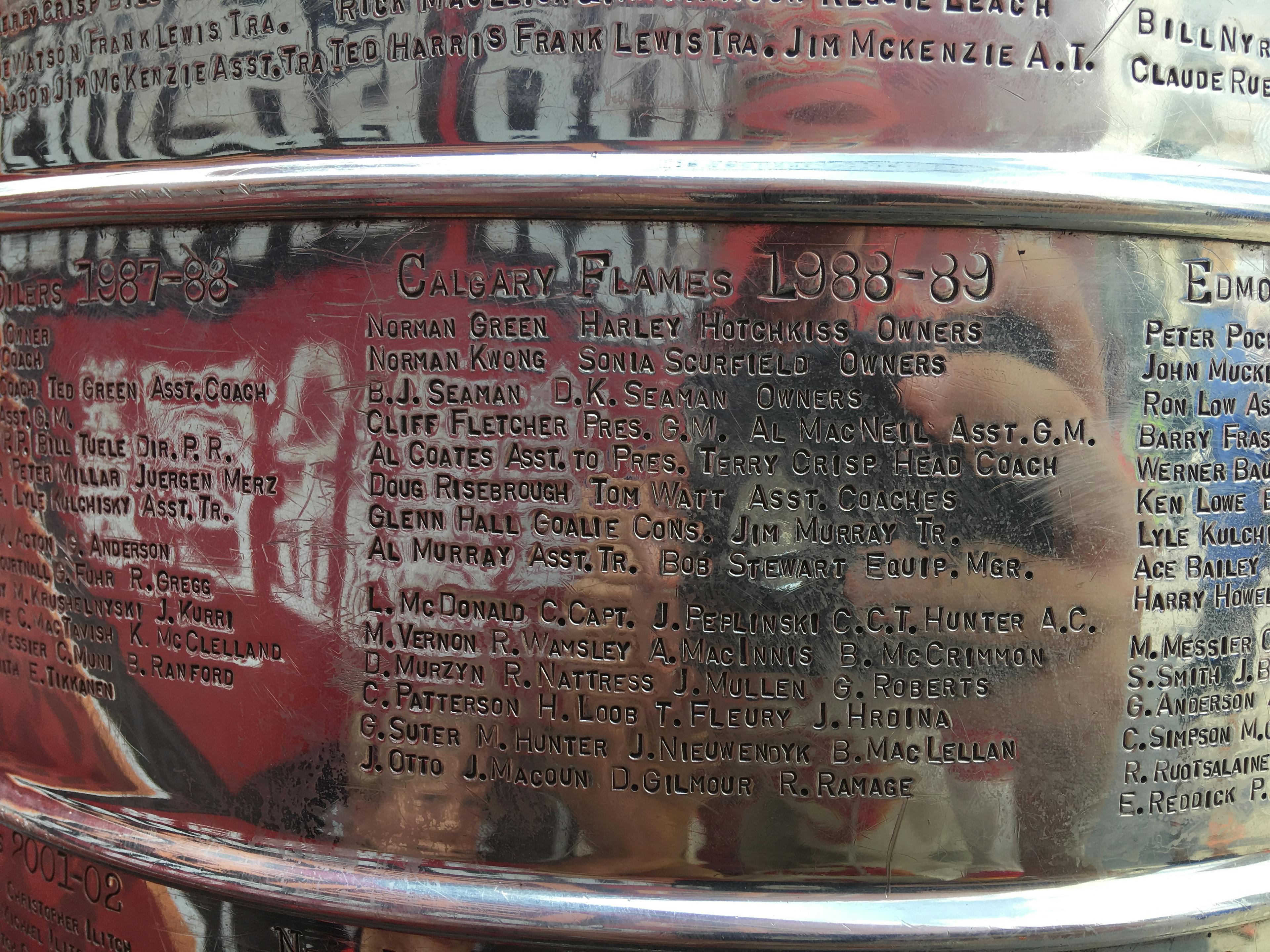
Hallowed memories
Other fan-friendly activities rounded out the experience. Curtis Lazar and Rasmus Andersson played street hockey with kids, while Alex Tanguay chatted with fans. There were also competitions for hardest shot and shooting accuracy, with the latter rather ironically sponsored by Tsing Tao beer, as no alcohol was available at the venue site. For fans looking for a more traditional hockey experience, the only reasonable option was warm beer selling for two dollars a can in an overwhelmed stall outside the venue gate. While not ideal, this proved to be the oasis in the desert for some fans sweltering in the heat.
The league’s efforts to create a family friendly environment were largely successful. The 2:30 p.m. gametime allowed for hundreds of children to attend. In order to help educate fans, Chinese-speaking emcees narrated as Harvey the Hound and Blades the Bruin spent a few minutes on the ice before the game entertainingly demonstrating cross-checking, tripping, elbowing and holding to the crowd. After penalty calls during the game, a brief description of the nature of the infraction was displayed on the scoreboard. The pre-game Hockey 101 education also included an explanation of offside and icing, though the nuances of Corsi were left for another day.
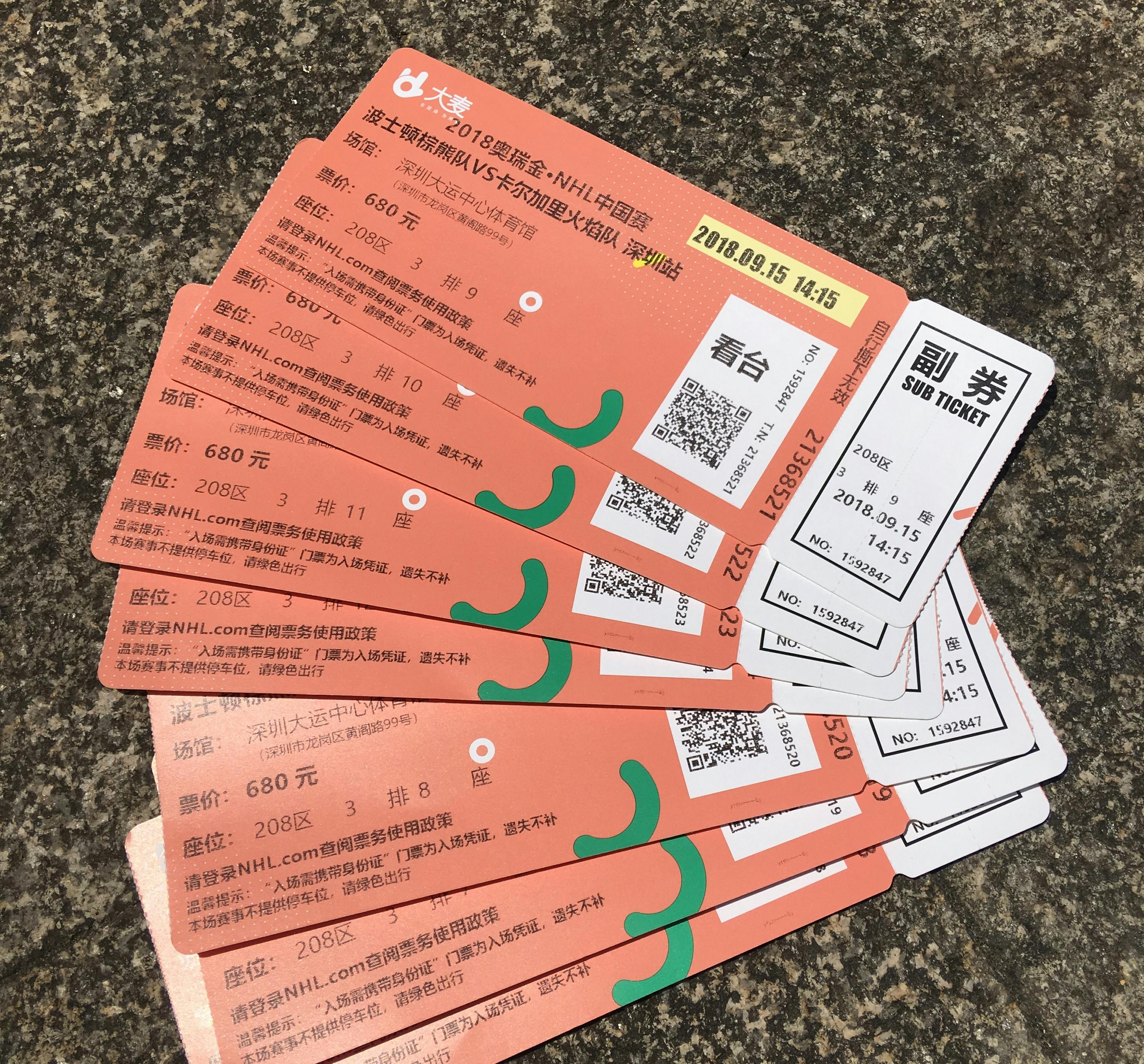
Not your standard Ticketmaster fare
The game itself had a distinctly Calgary home game feel. A large part of that was due to the presence of Flames PA announcer Alan Beesley, who urged the crowd to cheer on “your Calgary Flames”. The red-themed China Games aesthetics also helped. Efforts to engage the crowd through the use of Chinese cheerleaders and your standard fare of AC/DC, Tragically Hip and Bruno Mars also helped enliven the crowd, which responded dutifully to Chinese instructions on the scoreboard to “make some noise” and “wave your towels”.
By the middle of the second period, the flavour of a Canadian event had peaked as the wave circled the Sports Center while the crowd watched the scoreboard trying to guess the right coffee cup in the Tim Horton’s Coffee Cup Challenge. Beesley pressed the crowd even further, calling out “surfs up in the C of Red!”
Eight powerplays apparently weren’t enough for the pro-Flames crowd as they rang out with boos in overtime after Mikael Backlund’s obvious tripping penalty. Meanwhile in the crowd, children were enamoured with the big Canadian dog. Harvey the Hound may have won over more Chinese children than any Flames player did on the day.

Blades and Harvey wow the crowd
The league’s attendance figures of 10,218 seemed pretty accurate as the eye test indicated the stadium was about two-thirds full with approximately half the crowd constituting the Chinese middle class and the other half Western expatriates.
It was before the game and in between periods where the bridging of East and West was most overt. The greatest moment of cultural unease felt by most Canadian fans was prior to the game as both teams lined up for the singing of the national anthem and the only anthem to be sung by Jike Junyi was the anthem of the People’s Republic of China. A hockey game without the Canadian anthem felt about as odd as a hockey game without a pint, and Canadian fans got to experience both Saturday.
Between periods Matthew Tkachuk and Jake DeBrusk were peppered with questions about their feelings on the atmosphere, their impressions of Shenzhen and whether or not they liked China. The questions appeared designed as much to boost the esteem of Chinese fans in attendance as anything else.
While the China Games did do a lot of things well there were some obvious failures. Firstly, the food service was embarrasing. There appeared to be no more than 15 staff working the concessions for an crowd of over 10,000 people. The offerings were extremely limited. No hot food. No beer. Fans could choose from three flavours of pop, caramel corn, Snickers, and potato chips.
Recent articles from Paul Hart

